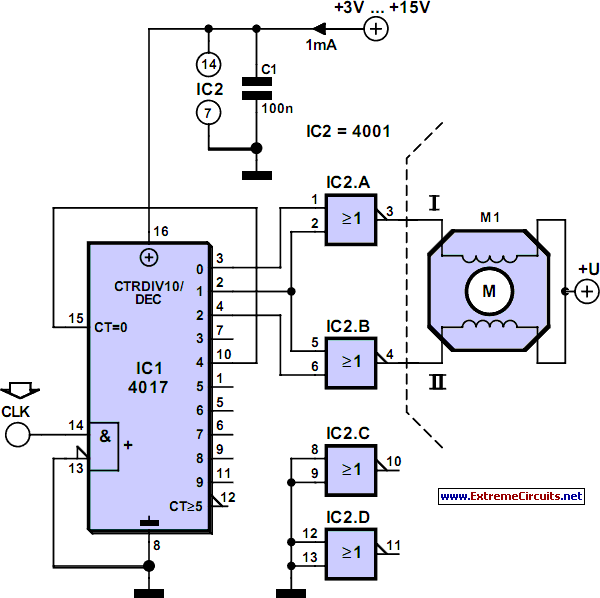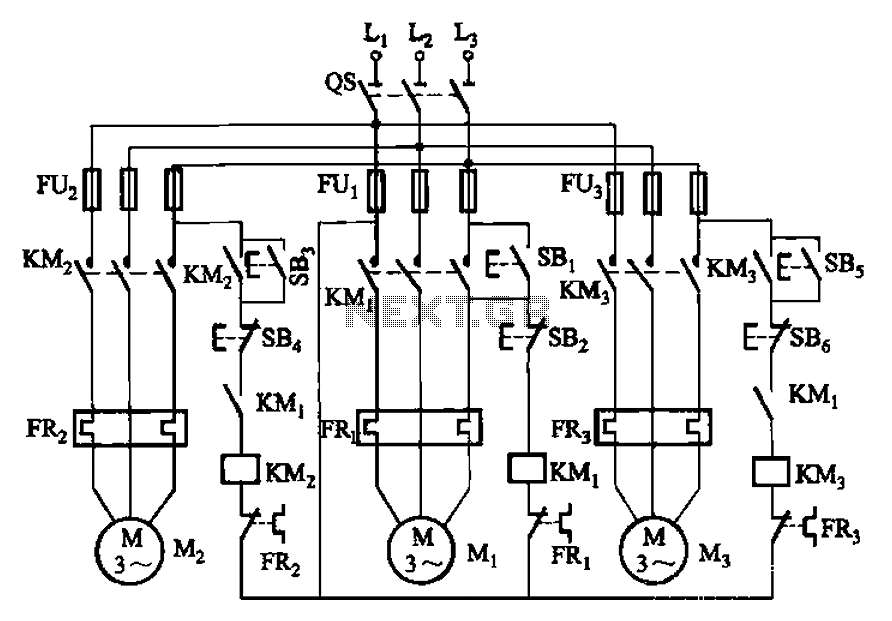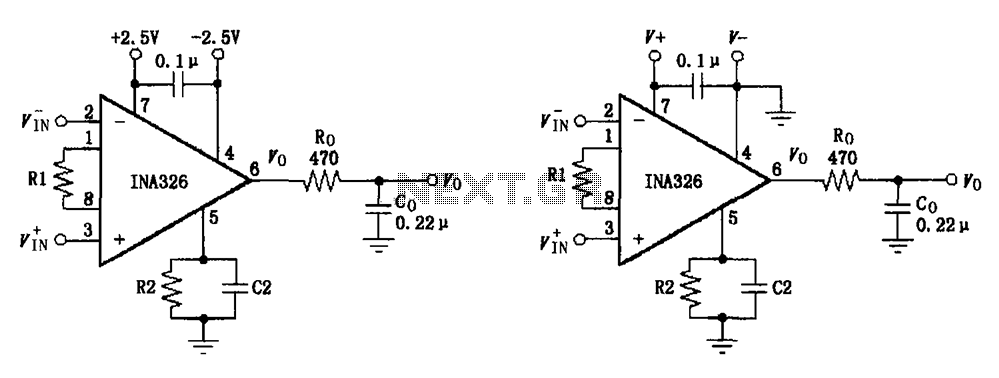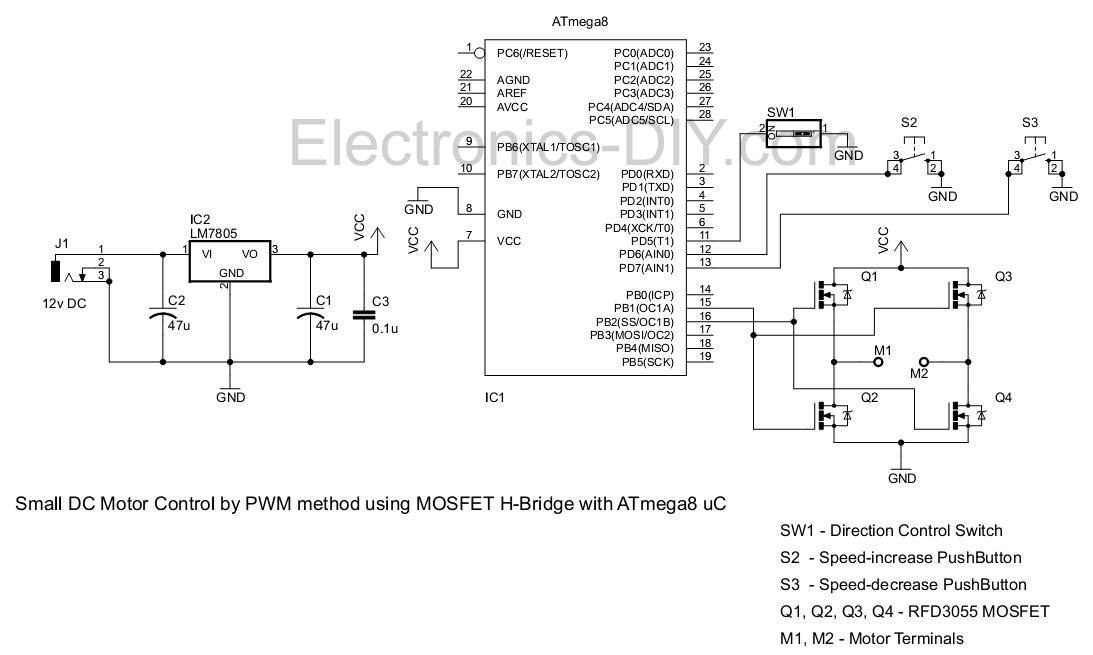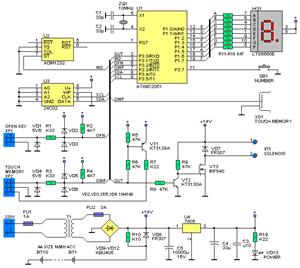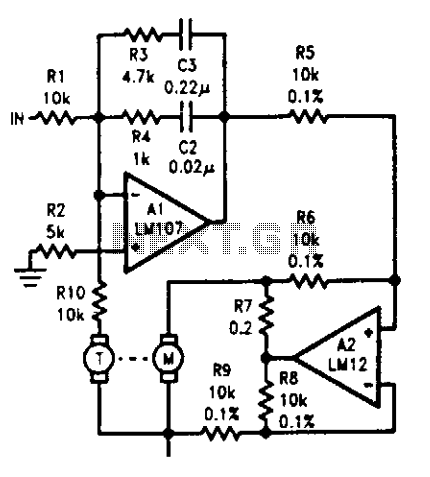
DC motor controller diagram with SCR and cmos ic
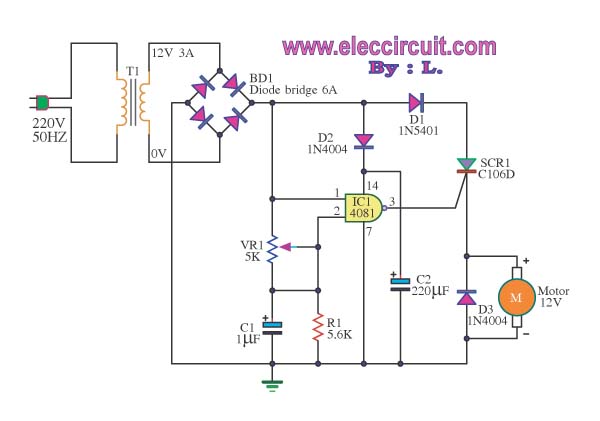
This is a speed motor controller circuit for a 12V DC motor. The speed of rotation of the spindle motor can be adjusted from 5 to 60 cycles per minute.
The speed motor controller circuit for a 12V DC motor typically includes several key components that work together to regulate the motor's speed. The circuit may consist of a variable resistor (potentiometer), a transistor or MOSFET for switching, a diode for flyback protection, and a microcontroller or timer IC for precise control.
The potentiometer allows the user to set the desired speed by varying the resistance in the circuit, which in turn adjusts the voltage supplied to the motor. The transistor or MOSFET acts as a switch that controls the power delivered to the motor based on the input from the potentiometer. This switching action can be implemented using Pulse Width Modulation (PWM) to efficiently control the speed without wasting energy.
The diode placed in parallel with the motor serves as a flyback diode, protecting the circuit from voltage spikes generated when the motor is turned off. This is crucial for maintaining the longevity and reliability of the components.
For precise speed control, a microcontroller or timer IC can be integrated into the circuit. This allows for more advanced features such as speed feedback, acceleration profiles, and the ability to set maximum speed limits. The output from the microcontroller can modulate the duty cycle of the PWM signal, providing a smooth and responsive control over the motor's speed.
Overall, this speed motor controller circuit is designed to provide efficient and adjustable control over the operation of a 12V DC motor, making it suitable for various applications where precise speed regulation is necessary.This is speed motor controller circuit of 12V DC motor. You can adjust the speed of rotation of the spindle motor from 5-60 cycles per minute. The work of.. 🔗 External reference
The speed motor controller circuit for a 12V DC motor typically includes several key components that work together to regulate the motor's speed. The circuit may consist of a variable resistor (potentiometer), a transistor or MOSFET for switching, a diode for flyback protection, and a microcontroller or timer IC for precise control.
The potentiometer allows the user to set the desired speed by varying the resistance in the circuit, which in turn adjusts the voltage supplied to the motor. The transistor or MOSFET acts as a switch that controls the power delivered to the motor based on the input from the potentiometer. This switching action can be implemented using Pulse Width Modulation (PWM) to efficiently control the speed without wasting energy.
The diode placed in parallel with the motor serves as a flyback diode, protecting the circuit from voltage spikes generated when the motor is turned off. This is crucial for maintaining the longevity and reliability of the components.
For precise speed control, a microcontroller or timer IC can be integrated into the circuit. This allows for more advanced features such as speed feedback, acceleration profiles, and the ability to set maximum speed limits. The output from the microcontroller can modulate the duty cycle of the PWM signal, providing a smooth and responsive control over the motor's speed.
Overall, this speed motor controller circuit is designed to provide efficient and adjustable control over the operation of a 12V DC motor, making it suitable for various applications where precise speed regulation is necessary.This is speed motor controller circuit of 12V DC motor. You can adjust the speed of rotation of the spindle motor from 5-60 cycles per minute. The work of.. 🔗 External reference
